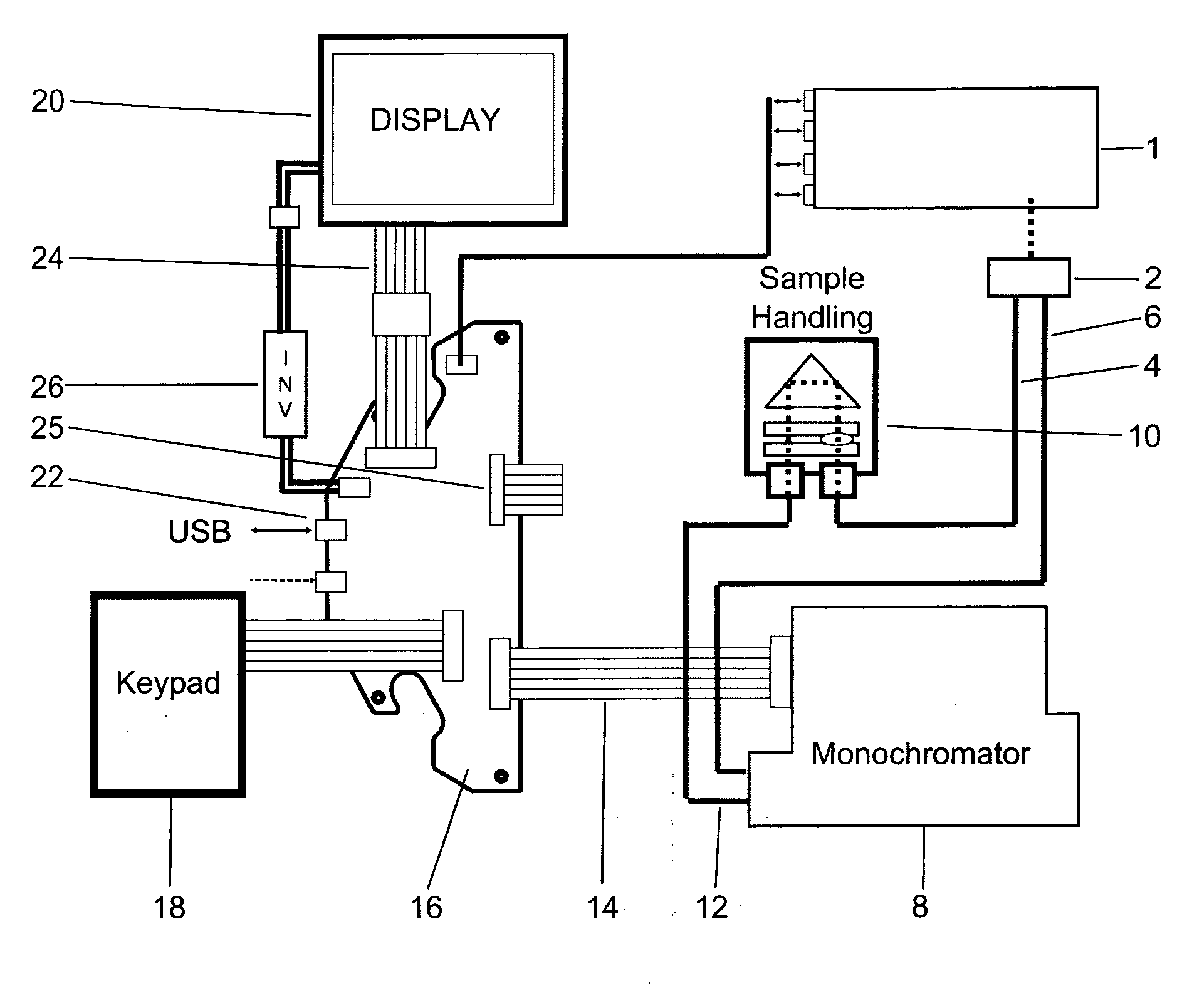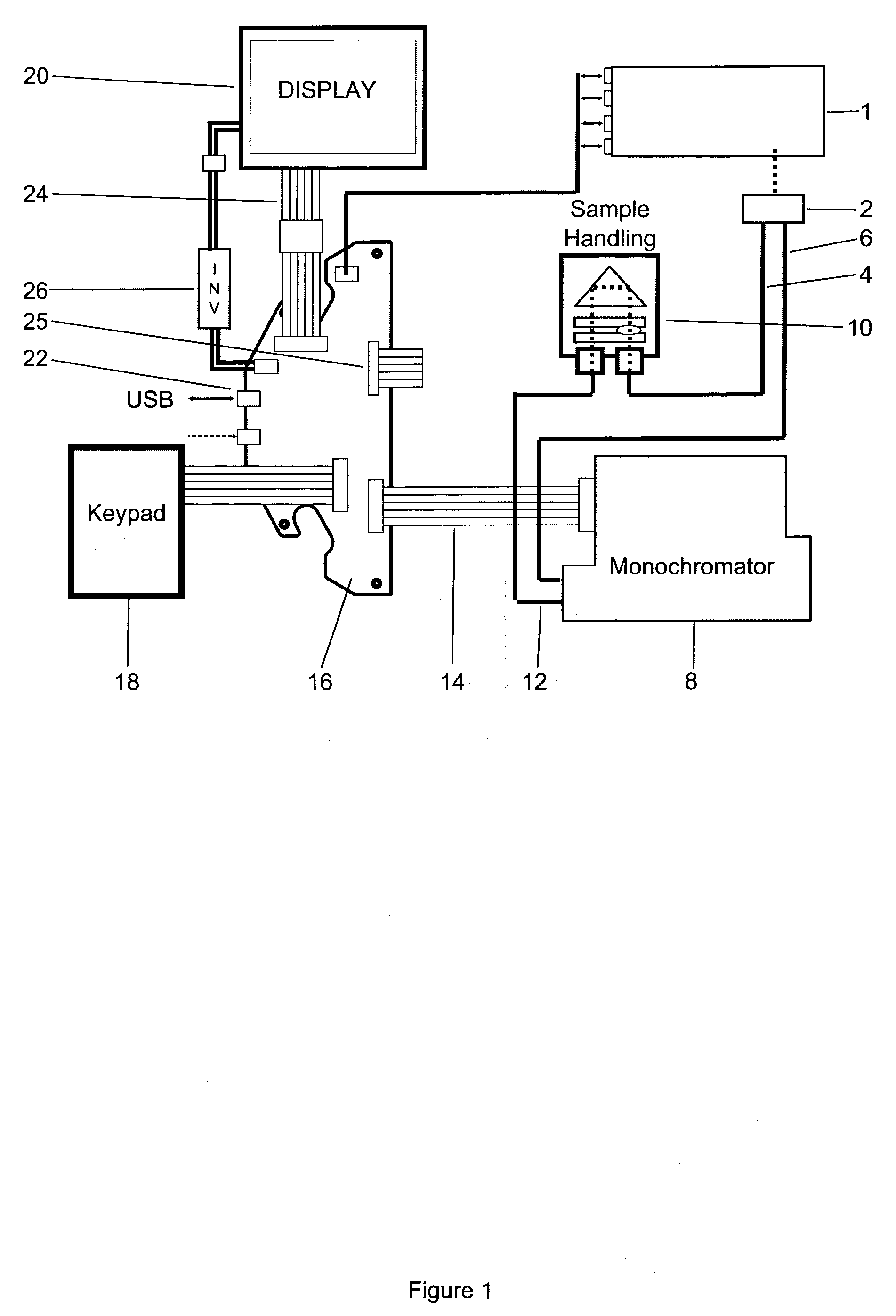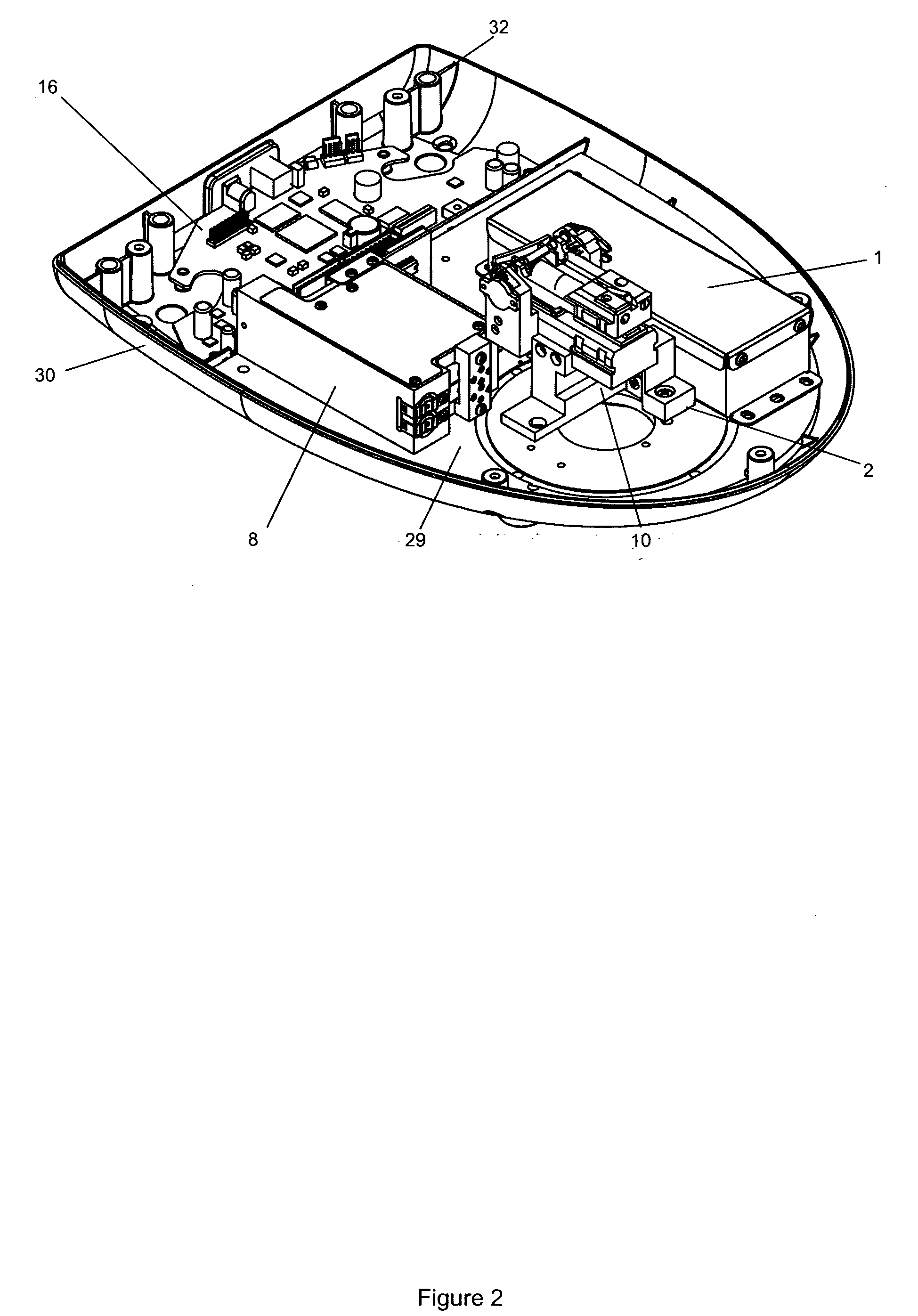Analytical Apparatus
a technology for analysing apparatus and liquid samples, applied in radiation pyrometry, withdrawing sample devices, instruments, etc., can solve the problems of affecting the accuracy of the apparatus, unable to fully retrieve the droplet, and losing significant amounts of liquid
- Summary
- Abstract
- Description
- Claims
- Application Information
AI Technical Summary
Benefits of technology
Problems solved by technology
Method used
Image
Examples
Embodiment Construction
[0064]With reference to FIGS. 1 and 2, the apparatus hereinbelow described is a spectrophotometric analyser of liquid samples (containing DNA and other proteins) supplied to the analyser in droplets of a volume of five microlitres or less. The apparatus comprises a xenon lamp module 1 that acts as means for generating an electromagnetic beam supplied to a beam splitter 2 a detector means in the form of a dual monochromator 8 and a sample handling assembly 10. The beam splitter 2 splits the beam into two further beams, each of which is fed to a respective one of two optical fibres 4 and 6. The fibre 6 is connected directly to one half of the dual monochromator 8 whilst the beam fed along the optical fibre 4 is also supplied to the monochromator 8, but via the sample handling assembly 10, in which the sample to be analysed is contained, and a further optical fibre 12 connecting the assembly 10 to said other half of the monochromator 8.
[0065]The output of the monochromator 8 is connect...
PUM
| Property | Measurement | Unit |
|---|---|---|
| diameter | aaaaa | aaaaa |
| diameter | aaaaa | aaaaa |
| diameter | aaaaa | aaaaa |
Abstract
Description
Claims
Application Information
 Login to View More
Login to View More - R&D
- Intellectual Property
- Life Sciences
- Materials
- Tech Scout
- Unparalleled Data Quality
- Higher Quality Content
- 60% Fewer Hallucinations
Browse by: Latest US Patents, China's latest patents, Technical Efficacy Thesaurus, Application Domain, Technology Topic, Popular Technical Reports.
© 2025 PatSnap. All rights reserved.Legal|Privacy policy|Modern Slavery Act Transparency Statement|Sitemap|About US| Contact US: help@patsnap.com



